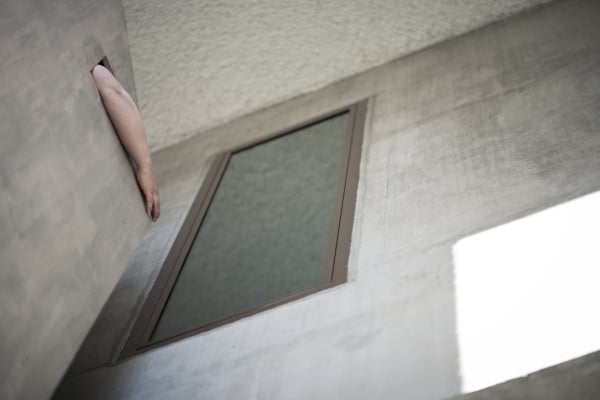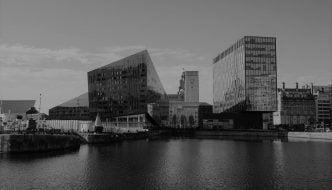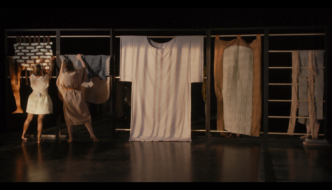 The implications raised in the conversation between sculptor Emily Speed and human geographer Duncan Light are at once eye-opening and more than a little unsettling. As they consider the complex interplay between the outside spaces of public areas, streets, buildings, cities, and the inner spaces of the human psyche with all anticipated majesties and horrors of their condition, one is before long left with the impression of a psychogeographical ouroboros, a tidal ebb and flow between the concrete world of city planners and the esoteric world of the private individual. Given the inevitability of these impossible-to-pin-down-or-quantify forces in conflict, it is easy to feel a sudden twinge of the occult in even the most pedestrian of urban areas. Iain Sinclair and Will Self have made good livings off this principle. Alan Moore rears a shaggy head.
The implications raised in the conversation between sculptor Emily Speed and human geographer Duncan Light are at once eye-opening and more than a little unsettling. As they consider the complex interplay between the outside spaces of public areas, streets, buildings, cities, and the inner spaces of the human psyche with all anticipated majesties and horrors of their condition, one is before long left with the impression of a psychogeographical ouroboros, a tidal ebb and flow between the concrete world of city planners and the esoteric world of the private individual. Given the inevitability of these impossible-to-pin-down-or-quantify forces in conflict, it is easy to feel a sudden twinge of the occult in even the most pedestrian of urban areas. Iain Sinclair and Will Self have made good livings off this principle. Alan Moore rears a shaggy head.
UCLAN has hosted these talks the length and breadth of the country, placing an artist with an academic with a similar area of expertise in conversation. The crux of the matter that unfolds is a simple one: authorities attempt to impose authority on public spaces and thus shape the populace, but the populace invariably alters it in a plethora of ways. The question is whether or not this is a conscious act of rebellion against the forces of authority and gentrification or a much deeper and subconscious need to push back at impositions on individuality.
It is a revelatory—if not revolutionary—conceit. There is something quietly cheering about the inevitability of human resistance against the squashing forces of supposed order. I’m all for the sensible development of public spaces, especially that puts the requirements of the population first, but with the ever tightening nexus of the same six or seven shops and the same six or seven architectural designs there is a hopeful tone to be struck in a people who will not put up with it anymore. There is a cheekiness to it, a quiet subversion that is genuinely uplifting for a species that so seldom gives you any pride. In Britain, Light illustrates, the use of monuments and statues in public spaces is a sure fire way to impose an accepted – propagated – version of history. Established history. So when we see the bronzed grimaces of Queen Victoria, the Duke of Wellington, Winston Churchill (not to mention street names to the fact) it’s easy to see a masturbatory round of statuesque applause for Britain’s imperial and militaristic past. But the revolt, as Speed brings to the table, is that the present will impose on the past. Thus the ten thousand pounds a year Glasgow city council spends removing a cone from the beatified bonce of Old Nosey and the grass strip Mohawk turning Winston into a punk.
There is an assumed docility, even placidity, of the population when it comes to the top-down reordering of urban spaces. Official versions of events, sanctioned ways of thinking, and allowed ways of behaving are carved and wrought into the space we occupy. Yet ours is a participatory relationship with the world around us and the adoption of a little of the flaneur, the situationist, and the psychogeographer in our day to day lives may prove beneficial to the health of that relationship. As with any wandering of the psychogeographical variety, seemingly minor observations can lead you down surprising vistas of thought. Thus: a single a throwaway joke by Speed gave me a tantalising and worrying view of the urban/psychological landscape of days to come. In mention of St. George’s Gardens where the late Mr. Gladstone (PM) holds bronzed vigil, Speed talked about it as an excellent place to catch Pokemon. Funny, absolutely. Yet I could not help but wonder if now that the age of consumerist augmented reality has very much dawned, now that with every passing season evermore screens and lenses are pressed between are innermost and outermost spaces what our relationship with the world outside us will be. If corporations and Big Money, who have thus far failed to truly stifle the anarchic humanity in us, can commodify the very reality we perceive – and charge us for the privilege – what then may become of the interplay between thought and place? O brave new world… that has such Squirtles in it.
This event was hosted by Bluecoat. If you want to see more of what Bluecoat has to offer, you can check out their list of upcoming events here.
Filed under: Art & Photography
Tagged with: Alan Moore, architecture, Bluecoat, Duncan Light, Emily Speed, Iain Sinclair, Pokemon Go, St Georges Gardens, Statues, UCLAN, Will Self



Comments